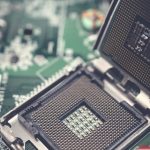A new chapter begins for RealSense after its departure from Intel, with the company announcing a broader, publicly-disclosed collaboration with NVIDIA. RealSense aims to position itself strongly within the robotics sector, supported by the introduction of the D555 depth camera. This alliance, now possible under RealSense’s independence, illustrates shifting dynamics in the robotics industry. Developers are showing notable interest in the new device, suggesting broader adoption and new possibilities for artificial intelligence in robotic applications.
Earlier reports on RealSense’s split from Intel focused largely on the company’s transition to autonomy and its potential diversification beyond previous restrictions. Industry observers had speculated about RealSense seeking strategic partnerships, but such public alignment with a direct competitor to Intel had not been openly discussed before now. The D555’s new features, including Power over Ethernet and real-time sensor fusion, add technical elements beyond RealSense’s prior camera models. Increased transparency in partnerships and more advanced integrations set this launch apart from simpler product updates in the past.
What Sets the D555 Depth Camera Apart?
The RealSense D555 depth camera introduces the v5 Vision Processor, offering integrated Power over Ethernet, a global shutter, and a built-in IMU. Notably, it provides native support for ROS 2, which is crucial for robotics developers. Direct streaming into NVIDIA’s Holoscan platform is supported, enabling low-latency sensor fusion and more precise real-time computing for robots deployed in dynamic settings.
How Will This Collaboration Impact Robotics Platforms?
By aligning with NVIDIA’s robotics platforms, particularly Jetson Thor, RealSense capabilities are expanded significantly. Jetson Thor, using the Blackwell GPU architecture, delivers up to 2070 teraflops of AI performance while optimizing power efficiency. This integration means robotics engineers can implement more sophisticated perception and artificial intelligence systems at the network edge, enhancing applications like autonomous mobile robots (AMRs) and humanoid robots.
What Feedback Have Developers and Stakeholders Provided?
Developer feedback for the D555 has reportedly been positive, with the first production run selling out quickly. According to RealSense, engineers have highlighted the system’s nearly zero latency between the camera and NVIDIA’s GPU, allowing processing rates up to 90 frames per second. Nadav Orbach, CEO of RealSense, explained,
“This initiative cements RealSense’s role as the perception platform of choice for AMRs and humanoids.”
Chris Matthieu, Vice President of the developer ecosystem, commented on progress and demand,
“Faster perception and faster decision-making could mean robots not only work more safely but also outperform humans by factors of 2–3x in productivity.”
The collaboration brings several advantages to developers, such as enhanced simulation-to-deployment workflows through NVIDIA Isaac Sim, optimized pipelines using Jetson Thor, and ultra-low-latency perception via integration with Holoscan Sensor Bridge. RealSense has indicated that this partnership marks a step towards wider deployment of robotics in practical environments, with further developments expected as both companies continue to collaborate.
The RealSense D555’s launch and its integration with NVIDIA platforms indicate a deliberate effort by RealSense to expand its reach beyond its previous constraints as part of Intel. Unlike prior years when strategic partnerships between these brands remained understated, the current move toward open collaboration offers robotics developers new processing capabilities and workflow improvements. The direct streaming capability and advanced processing are positioned to have a meaningful impact in sectors where real-time data and rapid decision-making shape safe and efficient robotics operation. Industry professionals interested in deploying scalable robotics should consider how such alliances and technical upgrades might fit into their own development plans, as both RealSense and NVIDIA set the stage for broader application of AI-powered automation.










